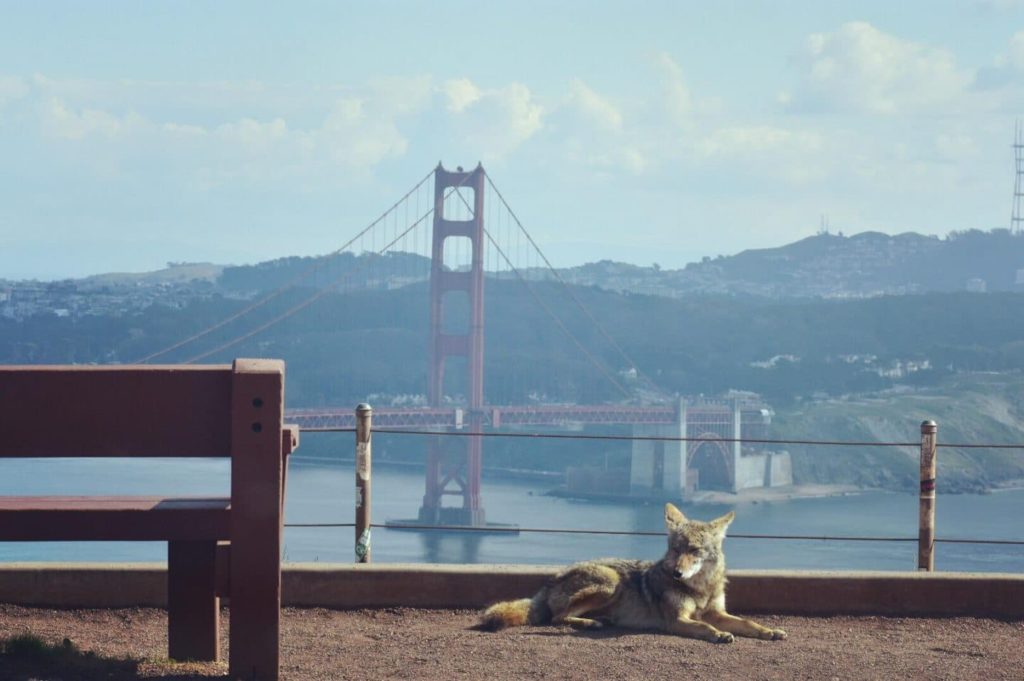By Rachel Kaplan, PhD student, Oregon State University College of Earth, Ocean, and Atmospheric Sciences and Department of Fisheries, Wildlife, and Conservation Sciences, Geospatial Ecology of Marine Megafauna Lab
The pandemic has taught me that certain skills – including ones I never recognized as such – can atrophy. How do I construct an outfit that involves actual pants instead of gym shorts? How do I make a lunch that is portable and can be eaten outside my home?
These are things that I’ve had to relearn over the last year, as I increasingly leave my virtual work world and move back into the physical world. Recently, the new ways in which the world is opening up again have pushed me to brush off another skill – how do I talk to other people about my work?
The pandemic has necessarily made the world a bit more insular. A year and a half into my graduate career, I’ve mostly discussed my work within the cozy cocoon of my lab groups and cohort. In particular, I’ve lived the last few months in that realm of research that is so specific and internal that almost no one else fully understands or cares about what I’m doing: I’ve spent days tangled up in oodles of models, been woken up at night by dreams about coding, and sweated over the decimal points of statistical deviance-explained values.
This period of scientific navel gazing abruptly ended this February. In the space of ten days, I presented at my first in-person conference during graduate school, gave a short talk at my first international conference, and gave my longest talk yet to a public audience. After reveling in the minutiae of research for months, it was so valuable to be forced to take a step back, think about the overarching narrative of this work, and practice telling that story to different audiences.
Presenting this work to an in-person audience for the first time was especially rewarding. With a physical (!) poster in hand, I headed out to Newport for the annual meeting of the Oregon Chapter of The Wildlife Society. The GEMM Lab really took this conference by storm – Leigh gave a plenary talk on the meeting’s theme of “Dynamic Oceans, Shifting Landscapes”, Lisa chaired a session and gave a talk about trophic relationships between kelp and whales, and Miranda presented a poster on the new Holistic Assessment of Living marine resources off the Oregon coast (HALO) project.
This great GEMM Lab presence gave me the opportunity to reference everyone else’s work as I shared my own, and to think about the body of work we do as a group and the coherence in research themes that different projects share. I almost lost my voice by talking for the entire duration of the poster session, and was energized by the opportunity to share this work with so many interested people.
Just a few days later, the biennial Ocean Sciences Meeting began. Dawn presented on forecasting the distribution of blue whales in New Zealand’s South Taranaki Bight region, and several members of the Krill Seeker Lab, led by my co-advisor Dr. Kim Bernard, presented their own zooplankton ecology research.
Originally scheduled for Hawaii, this meeting was instead held virtually as a safety precaution against Covid-19. Nevertheless, the diversity of talks and time spent gathering online still gave me the sense of being part of an international ocean science community. People attended from every time zone, and watching early-morning talks while wearing pajamas with Solene, Dawn, and Quin the dog is officially one of my new favorite conference experiences.
In addition to the chance to discuss science with other students and researchers, it was great to have the opportunity to step back from our normal routines a bit. The Krill Seeker Lab did the conference-organized 5K walk together (in intermittent rain, of course) and our team even came within one point of winning the trivia contest. All the while, we were hopping in and out of poster sessions and talks, realizing that virtual conferences can be just as busy as in-person ones.
Over the last two years, one of the things the pandemic has made me appreciate the most is the ability to gather. Dinner with friends, holidays with family – the ability to be together is far more tentative and precious than I realized during the “before times.” Now, as we start tiptoeing back into normal life a bit more, I’m appreciating the ability to gather for science and looking forward to more conferences in the future.
Did you enjoy this blog? Want to learn more about marine life, research and conservation? Subscribe to our blog and get a weekly email when we make a new post! Just add your name into the subscribe box on the left panel.

